Saved Bookmarks
Explore topic-wise InterviewSolutions in .
This section includes InterviewSolutions, each offering curated multiple-choice questions to sharpen your knowledge and support exam preparation. Choose a topic below to get started.
| 2451. |
Consider the reactions CO_((g))+H_(2)O_((g)to).^(larr)CO_(2)(g)+H_(2(g)) to K_(1) (ii) CH_(4(g))+H_(2)O_((g)to).^(larr)CO_((g))+3H_(2(g)) - K_(2) (iii) CO_(4(g))+2H_(2)O_((g)to).^(larr)CO_(2(g)) to K_(3) Give the relation between K_(1), K_(2) " and " K_(3). [K_(1), K_(2) " and " K_(3) are the equilibrium constants of the respective reactions. |
|
Answer» SOLUTION :(i) calculation of equilibrium constants for respective REACTIONS (II) relation between `K_(1), K_(2) " and " K_(3)` from the calculated `K_(1), K_(2) " and " K_(3)`. |
|
| 2452. |
Consider the reaction NO+(1)/(2)O_(2) hArr NO_(2). Which of the following gives the value of K_(c ) for this equilibrium ? |
|
Answer» `K_(C )=([NO][O_(2)]^(1//2))/([NO][O_(2)])` |
|
| 2453. |
_________ is the method used to separate cream from milk. |
|
Answer» |
|
| 2454. |
Consider the isotopes of carbon i.e c-12 c-13 ,c-14 would you place them in same or different slots in the periodiodic table ? Give reason |
| Answer» Solution :They should be placed in the same SLOT i.e they belong to IV A or 14 GROUP and 2nd period as they have same atomic NUMBER | |
| 2455. |
_________ is essential to perform separation by solvent extraction method |
|
Answer» SEPARATING FUNNEL |
|
| 2456. |
Conducts electricity in molten state and when in solutions. This statement is applicable to what type of compounds? |
|
Answer» |
|
| 2459. |
……………. Is an electrochemical cell which converts electrical energy into chemical change (Reaction). |
|
Answer» |
|
| 2460. |
Compounds with same molecular formula and different structural formula are known as __________ |
|
Answer» |
|
| 2462. |
............compounds have high melting and boiling points (a) Covalent (b) Coordinate (c) lonic |
|
Answer» |
|
| 2464. |
Compound X can be prepared by passing a gas Y I through a metal tube which is at very high temperature.Y on treatment with 2 g of hydrogen gas in presence of nickel gives a compound Z. Z can also : be prepared by treating ethyl alcohol with 'ic' acid of sulphur at 170^@ C. Y can also be prepared by hydrolysis of 'A' .Identify X,Y,Z and A and A and write all the balanced chemical equations. |
|
Answer» Solution :(i) identification of Z (II)identiflcation of Y from Z (iii) identiflcation of X from GIVEN REACTION of Y (IV) identification of A from Y |
|
| 2466. |
Compound and Mixture |
Answer» SOLUTION :
|
|
| 2467. |
Composition of the nuclei of two atomic species X and Y are given as under : X Y Protons = 66 Neutrons= 68 Give the mass numbers of X and Y. What is the relation between the two species ? |
|
Answer» SOLUTION :Mass number = number of protons + neutrons Mass number of X = 6+6 = 12 Mass number of Y = 6 + 8 = 14 The atomic number of both X and Y is the same, 1.e., 6. `therefore` X and Y are the ISOTOPES of the same ELEMENT. |
|
| 2468. |
_____ has the same properties throughout the sample |
| Answer» Answer :A | |
| 2469. |
Composition of the nuclei of two atomic species X and Y are given as under{:(,X,Y),("Protons "=,6,6),("Neutrons "=,6,8):}Given the mass number of X and Y. What is the relation between the species ? |
|
Answer» SOLUTION :Mass number of X = Number of PROTONS + Number of NEUTRONS `=6+6` = 12 Mass number of Y = Number of Protons + Number of Neutrons. `= 6+8=14` These two ATOMIC species X and have same atomic number but different mass number. Hence they are ISOTOPES. |
|
| 2473. |
Complete the table on the basis of the following information :""_(6)^(12)C, ""_(35)^(81)Br |
Answer» SOLUTION :
|
|
| 2475. |
Complete the table given below. |
Answer» SOLUTION :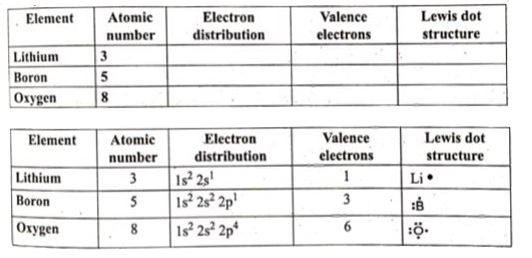
|
|
| 2476. |
________ cannot be compressed as there is little space between particles. |
|
Answer» |
|
| 2477. |
Complete the following table: {:("S.NO.","CELSIUS","KELVIN"),(1,90^(@)C,363K),(2,?,283K),(3,63^(@)C,?),(4,250^(@)C,?),(5,?,303K):} |
Answer» SOLUTION :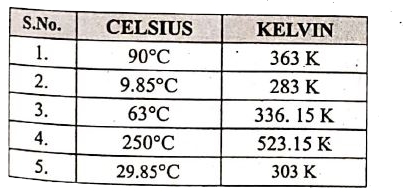
|
|
| 2479. |
Complete the following table: |
Answer» SOLUTION :
|
|
| 2480. |
________ and ________ are the two elements that are liquid at room temperature. |
|
Answer» |
|
| 2481. |
Complete the following table |
Answer» SOLUTION :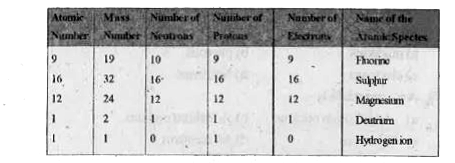
|
|
| 2482. |
…………………, ………………and ……………..are macronutrients required for plant growth. |
|
Answer» |
|
| 2483. |
Complete the following equations and state whether they are oxidation or reduction reaction. O^(2-)-2e^(-)to _______. |
| Answer» SOLUTION :`O^(2-)-2E^(-)toO`. (OXIDATION) | |
| 2484. |
{:("""A","""B"),("1. Kerosene from water","a. Chemical change"),("2. Iron pins from sand","b. Centrigugation"),("3. Butter from curd","c. Physical change"),("4. Digestion of food separation","d. Magnetic"),("5. Freezing of water","e. Decantation"):} |
|
Answer» |
|
| 2485. |
Complete the following equations and state whether they are oxidation or reduction reaction. Na^(+)+____toNa |
| Answer» SOLUTION :`NA^(+)+etoNa`. (REDUCTION) | |
| 2486. |
Complete the following equations and state whether they are oxidation or reduction reaction. Cu - _____ toCu^(2+) |
| Answer» SOLUTION :`Cu-2e^(-)TOCU^(2+)`. (OXIDATION) | |
| 2487. |
Complete the following equations and state whether they are oxidation or reduction reaction. Fe^(2+)to____+e^(-) |
| Answer» Solution :`Fe^(2+)TOFE^(3+)+E^(-)`. (Oxidation) | |
| 2488. |
Complete Table 2.3 by examining the arrangement of electrons before and after the chemical reaction during the formation of sodium chloride. Which atom accepts electron? How many electrons? . |
|
Answer» |
|
| 2489. |
Compare Thomson's atomic model with Ruterford's atomic model. |
Answer» SOLUTION :
|
|
| 2490. |
Compare the properties of electrons, protons and neutrons. |
Answer» SOLUTION :
|
|
| 2491. |
Compare the conductivity of a solution of NaOH in water and in alcohol. |
|
Answer» Solution :(i) COMPARISON of polar nature of water and alcohol (II) TYPE of BONDS present in sodium hydroxide (iii) relation between POLARITY and dielectric constant (iv) effect of dielectric constant on solubility (v) comparison of dielectric constants of water and alcohol |
|
| 2492. |
Compare the charge and mass of protos and electrons . |
| Answer» Solution :`{:(,"MASS","Charge"),("PROTON",1.672x10^(-24)g,"Positive"),("Electron",9.108x10^(-28)g,"NEGATIVE"):}` | |
| 2493. |
Compare solids and gases on the basis of (i) rigidity (ii) compressibility and (iii) movement of particles. |
Answer» SOLUTION :
|
|
| 2494. |
Compare metals and non-metals based on the following properties (i) Electrical conductivity (ii) Tensile strength (c) Formation of ions (iv) Reaction with acids |
Answer» SOLUTION :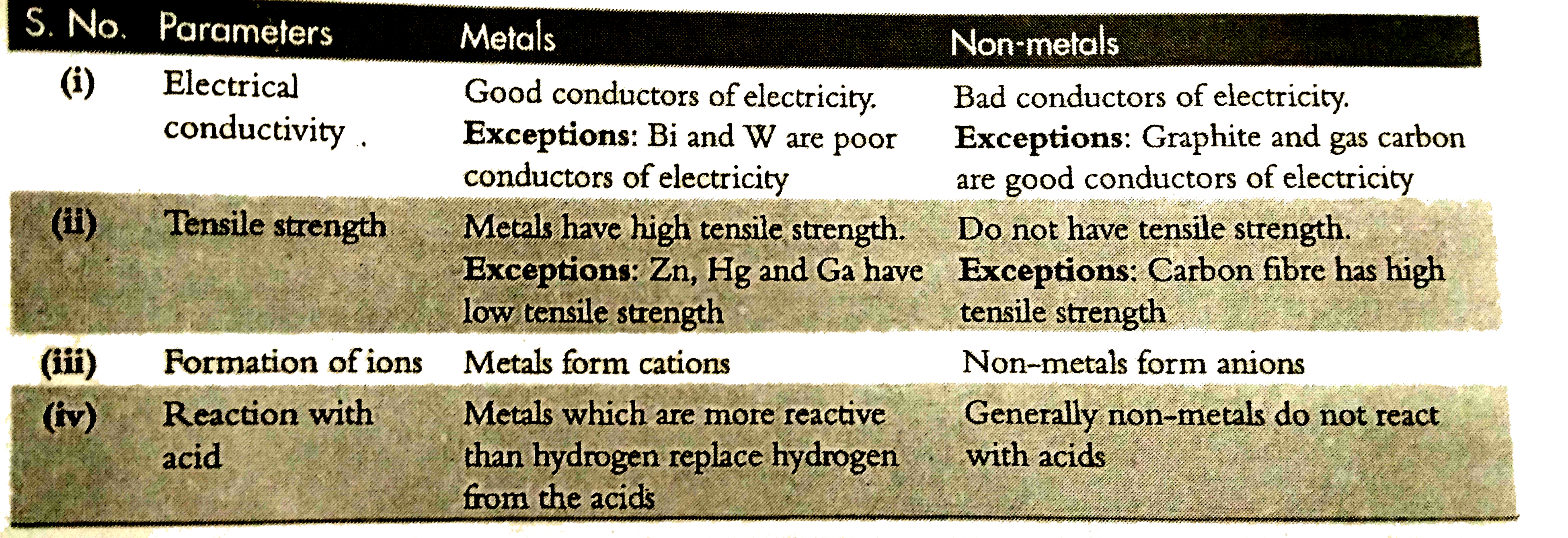
|
|
| 2495. |
Compare cast iron, steel and wrought iron. |
| Answer» SOLUTION :N/A | |
| 2496. |
Compare boiling and evaporation. |
Answer» SOLUTION :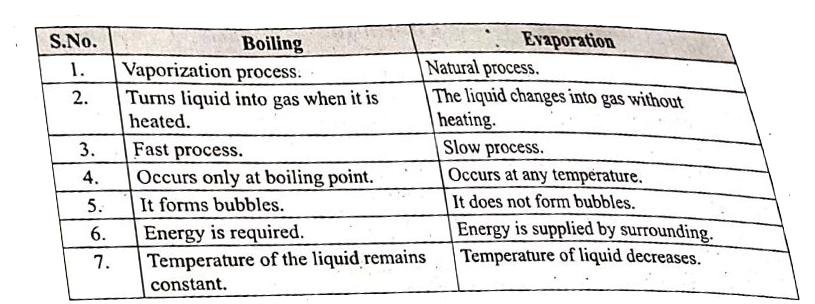
|
|
| 2497. |
Compare all the proposed models of an atom given in this chapter. |
Answer» SOLUTION : 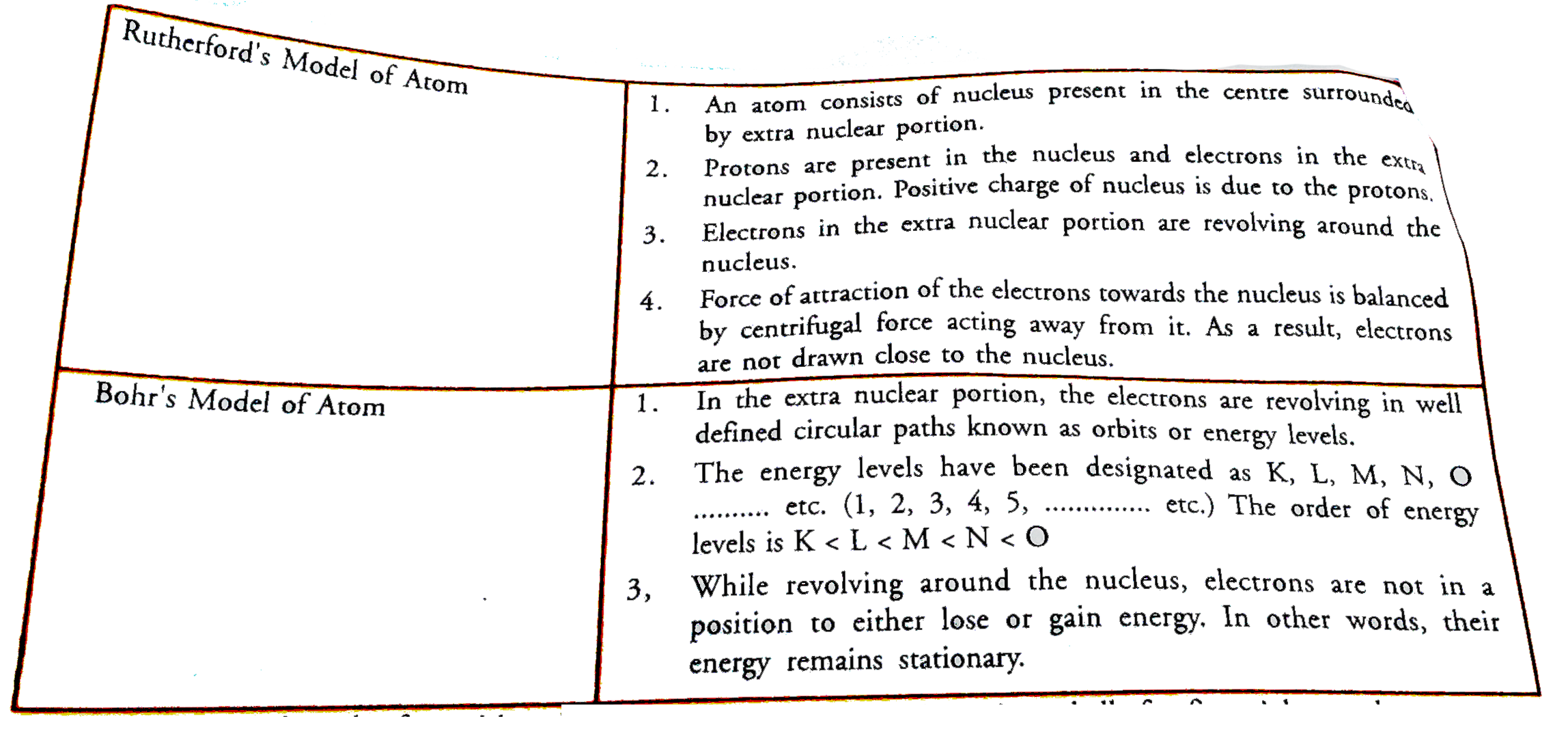
|
|
| 2498. |
Compare all the proposed model of an atom given in this chapter. |
Answer» SOLUTION :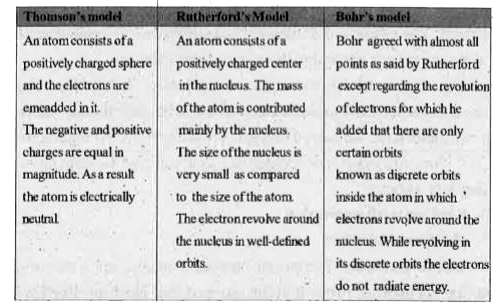
|
|
| 2499. |
Compare all proposed models of an atom given in this chapter |
Answer» SOLUTION :
|
|
| 2500. |
Common salt (Table salt) dissolves in water. |
| Answer» SOLUTION :Matter is made up of minute particles. Minute particles of matter have space between them. So when COMMON SALT is ADDED towater, thepaticles of salt get into the space between particles of water. HENCE, common salt (Table salt) dissolves in water. | |